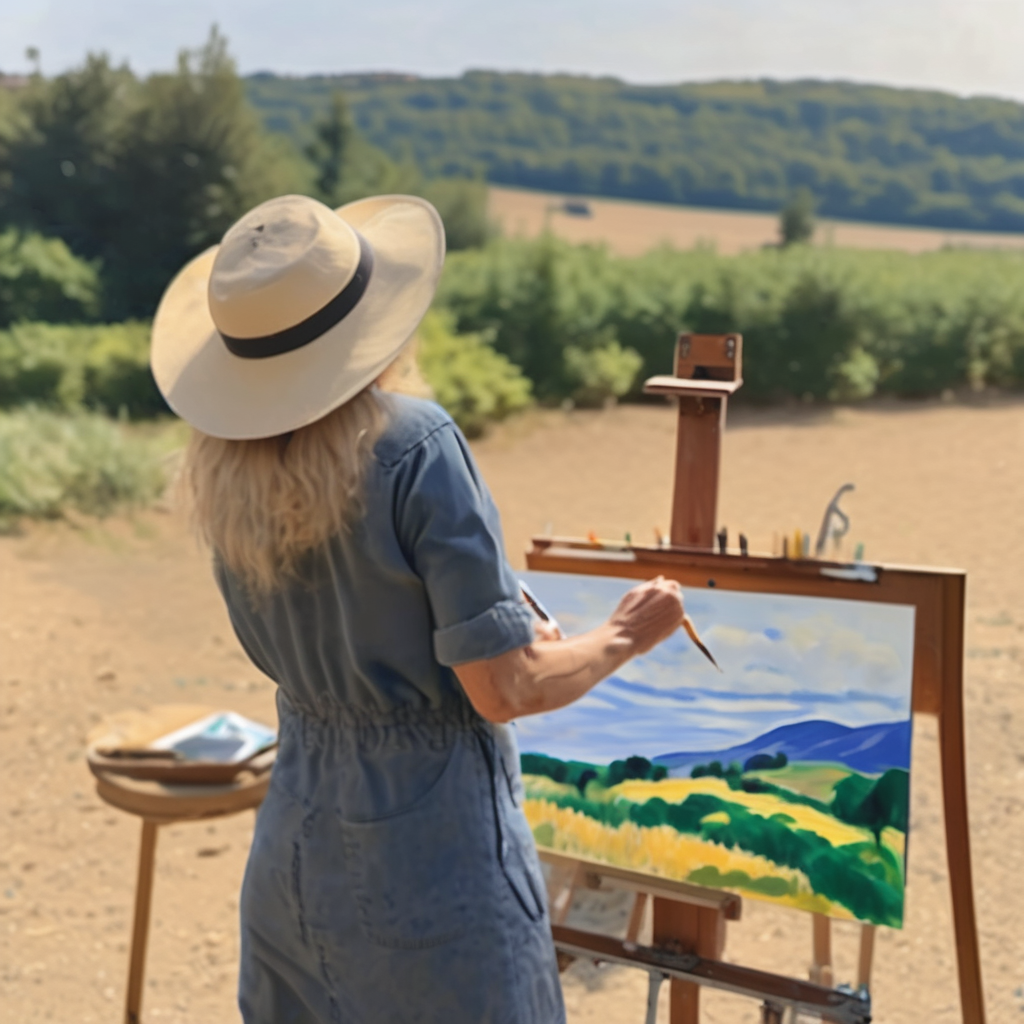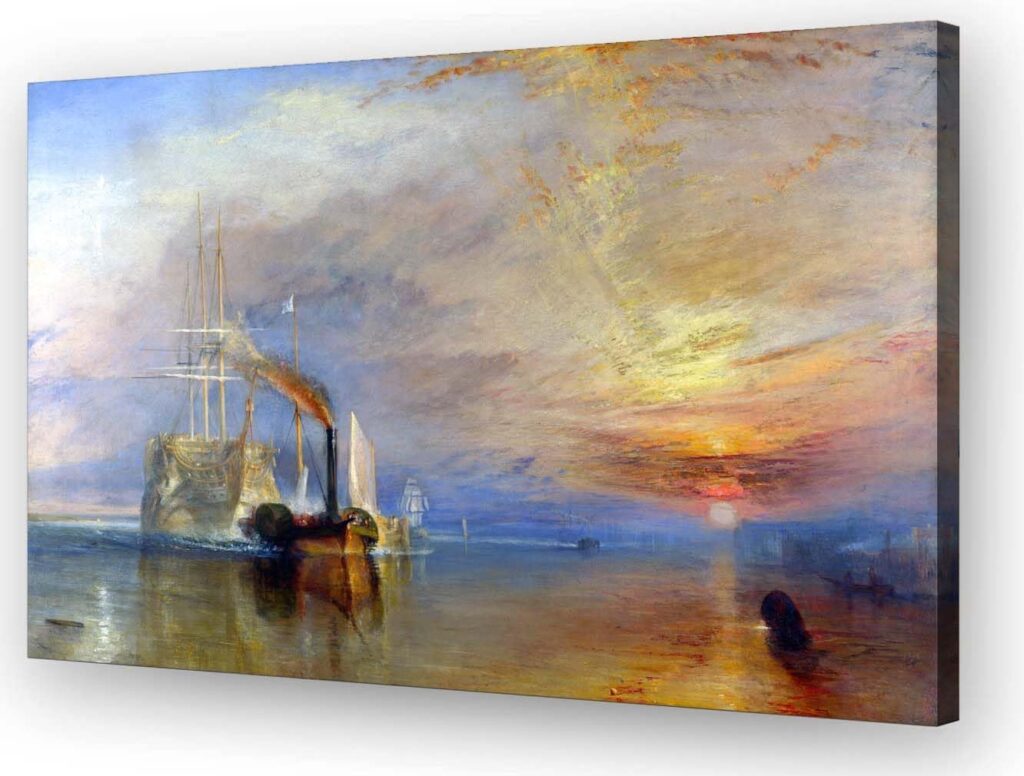As we sip our coffee and gaze out at the bustling city streets, it’s easy to feel a sense of disconnect from the art world. After all, what do the dreamy, colorful canvases of the Impressionists have to do with our fast-paced, modern lives? More than you might think, my friend.
Impressionism, the revolutionary art movement that emerged in the late 19th century, has a way of capturing the very essence of the world around us – the fleeting moments, the play of light, the beauty in the everyday. And as we navigate the ever-changing landscape of the present, understanding the Impressionist approach can unlock a whole new way of seeing and experiencing the world.
What is Impressionism, and Why Does it Matter?
Impressionism is all about capturing the immediate, sensory impression of a scene – the way the light dances across a landscape, the way a person’s face is softened by shadow, the way a city street hums with energy. Rather than focusing on precise details, Impressionist painters sought to convey the overall mood and atmosphere of a moment in time.
This radical shift in artistic approach was a response to the rapidly changing world of the late 1800s. As industrialization transformed the urban landscape and new advancements in science and technology reshaped our understanding of light and color, the Impressionists sought to reflect these dynamic shifts in their art.
“I have sworn to the anguish and beauty of this world, to the torment and glory of it, to the vitality and corruption of it, and to the endless competition of growth and death.”
– Claude Monet

But the relevance of Impressionism extends far beyond its historical context. In an age where we’re constantly bombarded with information and stimuli, the Impressionist approach offers a refreshing antidote. By focusing on the sensory experience of a moment, rather than the minutiae, Impressionist art invites us to slow down, to savor the world around us, and to find beauty in the fleeting and the ephemeral.
Impressionist Painting Techniques: Unlocking the Secrets of Light and Color
At the heart of Impressionist art are a set of revolutionary painting techniques that transformed the way we see and experience the world. Let’s dive into a few of the key elements:
Painting en Plein Air

Impressionist painters were the first to venture out of their studios and into the great outdoors, capturing the ever-changing effects of natural light on their canvases. By painting en plein air, they could observe the subtle shifts in color and atmosphere that occur throughout the day, infusing their work with a sense of immediacy and spontaneity.
Broken Color and Optical Mixing
Rather than blending colors on their palettes, Impressionist painters applied small, distinct strokes of pure color to their canvases. This approach, known as “broken color,” allowed the viewer’s eye to blend the colors, creating a shimmering, luminous effect.
Expressive Brushwork
Impressionist brushstrokes were loose, energetic, and expressive, capturing the essence of a scene rather than its precise details. By using a variety of techniques, from thick, impasto strokes to delicate, feathery touches, Impressionist painters conveyed a sense of movement and emotion in their work.
Capturing the Fleeting Effects of Light
Perhaps the most defining characteristic of Impressionist art is the way it explores the ever-changing effects of light. Impressionist painters were fascinated by the way light danced across surfaces, creating reflections, shadows, and atmospheric effects that were constantly in flux.
“I have no other wish than to capture the true and passing moment, the elusive apparition that nature offers us.”
– Camille Pissarro
Exploring the Diverse Styles of Impressionist Masters
While Impressionism is united by a shared approach to capturing the sensory experience of a moment, the individual Impressionist painters each developed their own unique styles and subject matter. Let’s take a closer look at a few of the most influential Impressionist artists:
Claude Monet
Monet’s paintings are renowned for their breathtaking explorations of light and color. From his iconic Haystacks series to his serene water lily paintings, Monet’s work is a testament to the ever-changing nature of the natural world.
Pierre-Auguste Renoir

Renoir’s joyful, sensual depictions of everyday life and the human form captured the essence of Impressionist joie de vivre. His vibrant, colorful canvases brim with energy and a celebration of the beauty of the natural world.
Camille Pissarro
Pissarro’s paintings offer a more naturalistic take on Impressionism, with a focus on rural and urban landscapes that convey a sense of harmony and tranquility. His work is marked by a keen eye for detail and a deep respect for the natural world.
Edgar Degas

Degas’ innovative compositions and perspectives set him apart from his Impressionist peers. His depictions of modern, urban life – from ballet dancers to racetrack scenes – are characterized by a sense of dynamic movement and an almost photographic attention to detail.
Appreciating and Interpreting Impressionist Art
Engaging with Impressionist art is not just about admiring the technical mastery of the painters. It’s about stepping into a unique perspective on the world, one that invites us to slow down, to savor the sensory experience of a moment, and to find the beauty in the fleeting and the ephemeral.
As you explore Impressionist paintings, try to immerse yourself in the scene, allowing your eyes to blend the colors and your senses to be heightened by the play of light and shadow. Look for the ways in which the artists have captured the essence of a moment, rather than its precise details, and consider how this approach might shift your own perspective on the world around you.
“The richness I achieve comes from nature, the source of my inspiration.”
– Claude Monet
Bringing Impressionist Inspiration into Your Own Artistry
If the allure of Impressionism has sparked your artistic imagination, there are plenty of ways to incorporate its techniques and approaches into your own painting practice. Start by gathering the right materials – high-quality paints, brushes, and canvases that will allow you to experiment with the Impressionist aesthetic.
Embrace the process of painting en plein air, venturing out into the natural world to observe the constantly changing effects of light and atmosphere. Experiment with broken color and optical mixing, allowing your brushstrokes to dance across the canvas in a symphony of hue and texture.
Most importantly, resist the urge to focus on precise details. Instead, let your work be guided by the sensory experience of the moment, allowing the essence of the scene to emerge through your expressive, energetic brushwork.
Conclusion: The Enduring Legacy of Impressionism
As we sip the last drops of our coffee and gaze out at the ever-changing city landscape, it’s clear that the lessons of Impressionism have never been more relevant. In a world that often feels fast-paced and overwhelming, Impressionist art offers a refreshing antidote – a way of seeing and experiencing the world that celebrates the fleeting, the ephemeral, and the beauty in the everyday.
“The world is already beautiful. You just have to look at it with the right eyes.” – Pierre-Auguste Renoir
So why not take a page from the Impressionists’ playbook and start exploring the world with a renewed sense of wonder and curiosity? Grab your paints, venture out into the light, and let the magic of Impressionism transform the way you see – and create – the world around you.
References:
- A Short Guide to Impressionist Painting by Decorative Collective:
https://www.decorativecollective.com/blog/a-short-guide-to-impressionist-painting
This guide introduces key impressionist painting techniques like short brushstrokes, vivid colors, and casual compositions. It also discusses famous impressionist works. - Impressionism by Tate Kids:
https://www.tate.org.uk/kids/explore/what-is/impressionism
This kid-friendly page explains why impressionism is called “impressionism”, who the main impressionist artists were, and how they painted outdoors using thick brushstrokes. It also mentions women impressionists like Berthe Morisot. - Impressionism by Britannica:
https://www.britannica.com/art/Impressionism-art
Britannica’s overview covers the founding impressionist artists, influences, beginnings of the movement, and the impressionist exhibitions. It places impressionism in the context of French art history. - Impressionism Movement Overview by TheArtStory:
https://www.theartstory.org/movement/impressionism/
This in-depth article discusses impressionist techniques like loose brushwork, light colors, and capturing optical effects of light. It also covers impressionism’s influence on music and literature, and provides a timeline of the impressionists’ lives



